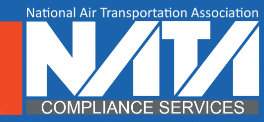
Just entering the transportation industry or new to the Drug/Alcohol Program Manager (DER) position? Over the course of this month, we will be giving you some best practices and warnings to help you with your Department of Transportation (DOT) Random Drug and Alcohol Testing Program.
If you are new to Federal Aviation Administration (FAA)/DOT drug and alcohol testing programs, you may wonder why even test at all. Testing is a great tool for employers for a variety of reasons, including the following:
- Deters drug and alcohol use in the workplace
- Saves lives and prevents injuries
- Allows an employee to easily say no to illegal drug use because of the testing done at their work
- Reduces employer liability
- Helps identify and facilitate treatment for those who are using or abusing.
Additionally, random testing is the most “fair” way to test. So, now that you know why testing is a good idea, let’s next quickly cover who needs to be tested.
Regardless of job titles, people should be tested based on their job function. If an employee preforms a safety-sensitive function, regardless of his or her title (the president, a supervisor, a volunteer, or a contract worker), he or she should be in the pool of people that can randomly be selected to test. If your operation has two parts, a DOT and a non-DOT part, then only employees preforming DOT safety-sensitive functions should be in your DOT random pool. This DOT random pool should be kept distinctly separate from your private company or non-DOT testing program. The pools are also completely separate. You will want to make sure that you keep these lists up to date. A best practice is just before preforming a random selection, refresh the pool to include all safety-sensitive employees subject to DOT random testing, excluding those not subject to random testing and who may no longer be with the company.
Now you should know who gets tested. Next, you will want to know how to select employees. Random drug testing should be just that—random. As a warning, random draws made by randomly picking numbers are not acceptable random test selection practices. These methods are all easily influenced, consciously or unconsciously, by the people involved. You will want to ensure that you are using scientifically valid methods of selecting employees from testing. Random number tables or computer-based random number generators, traceable to a specific employee, are all acceptable. Your third-party administrator (TPA) should be able to let you know how they select random tests from your pool so that you can ensure it is valid.
In the end, you want to ensure that everybody in the pool must have an equal chance of being chosen and tested in each selection period.
Return for Part 2 of this series on June 11!




